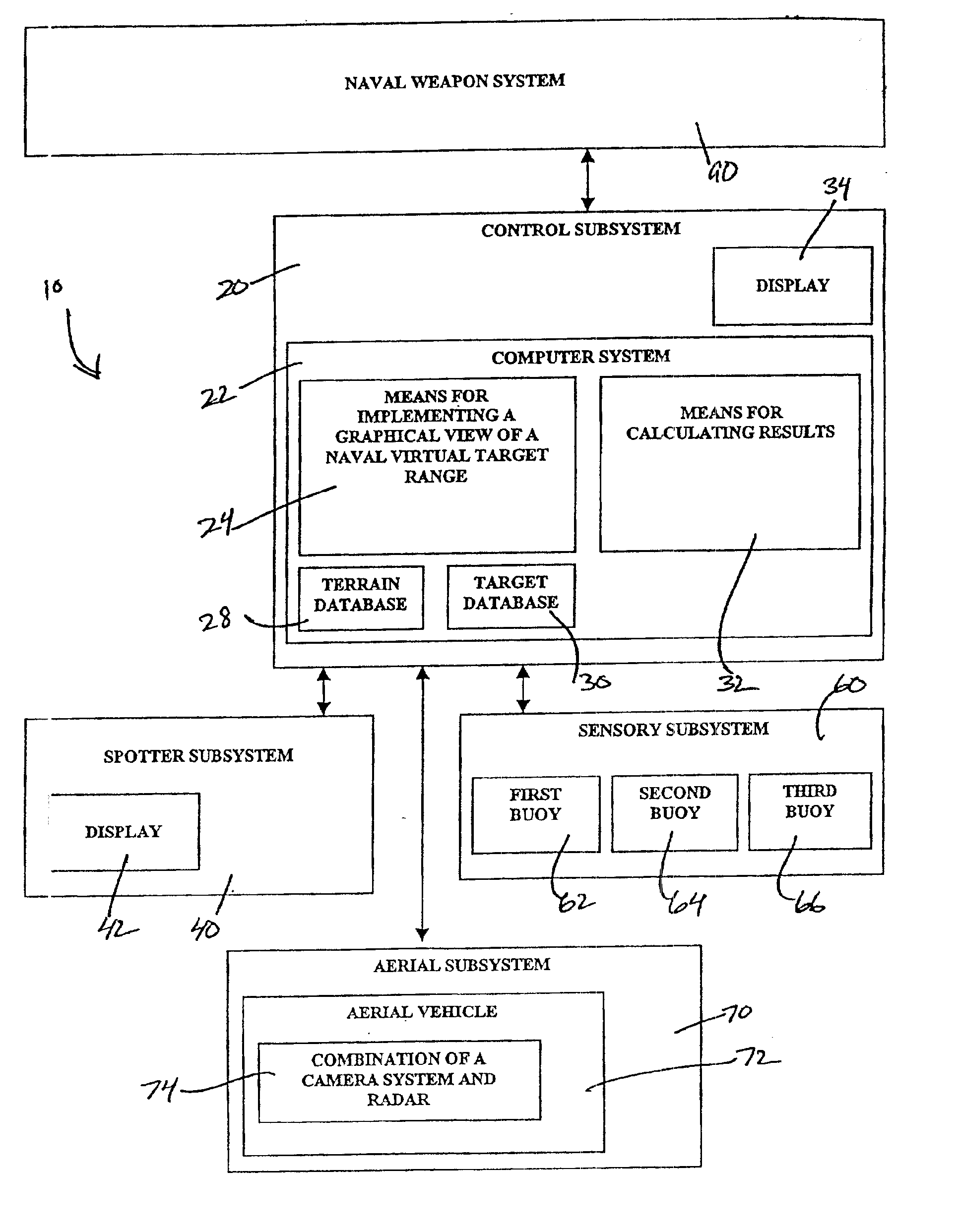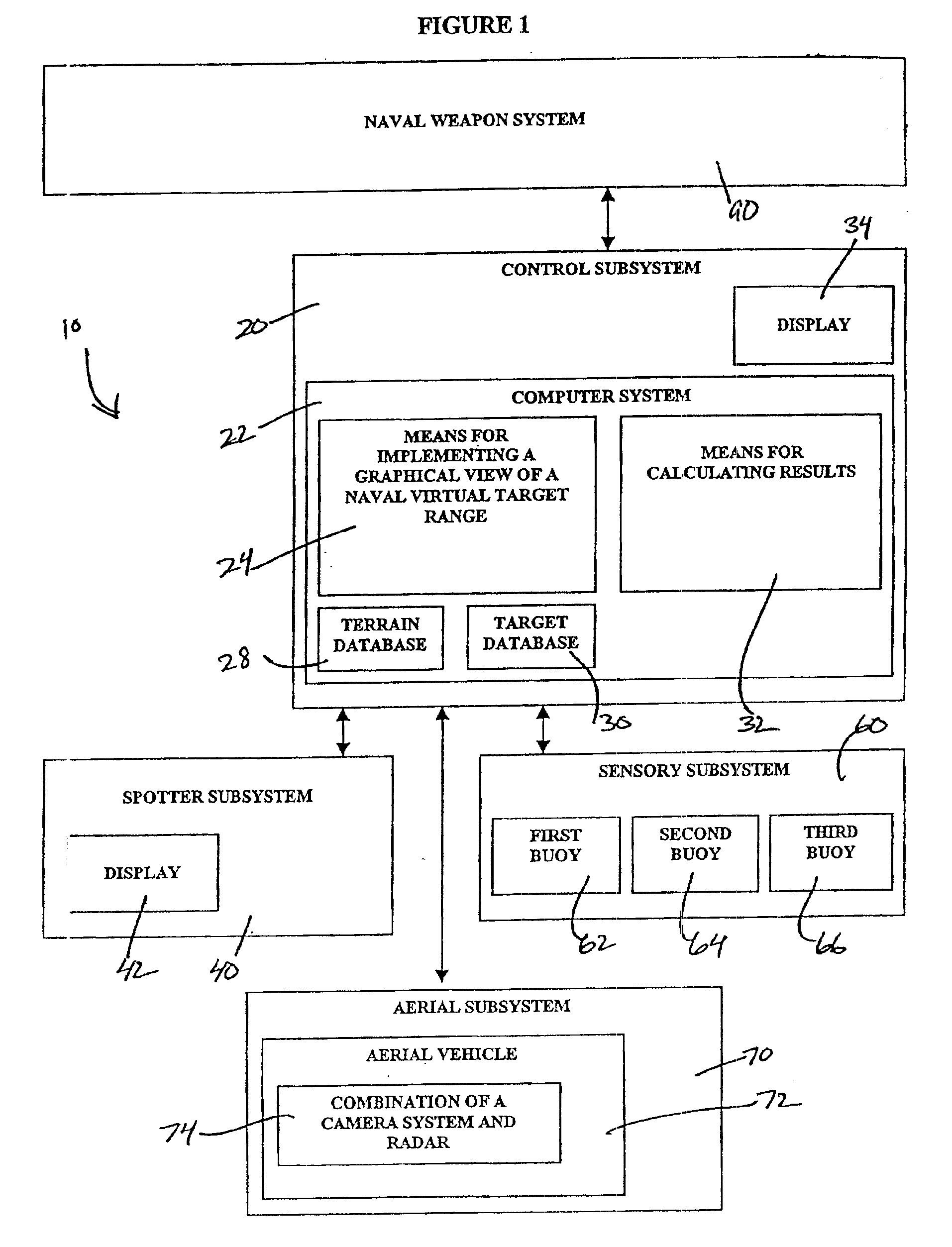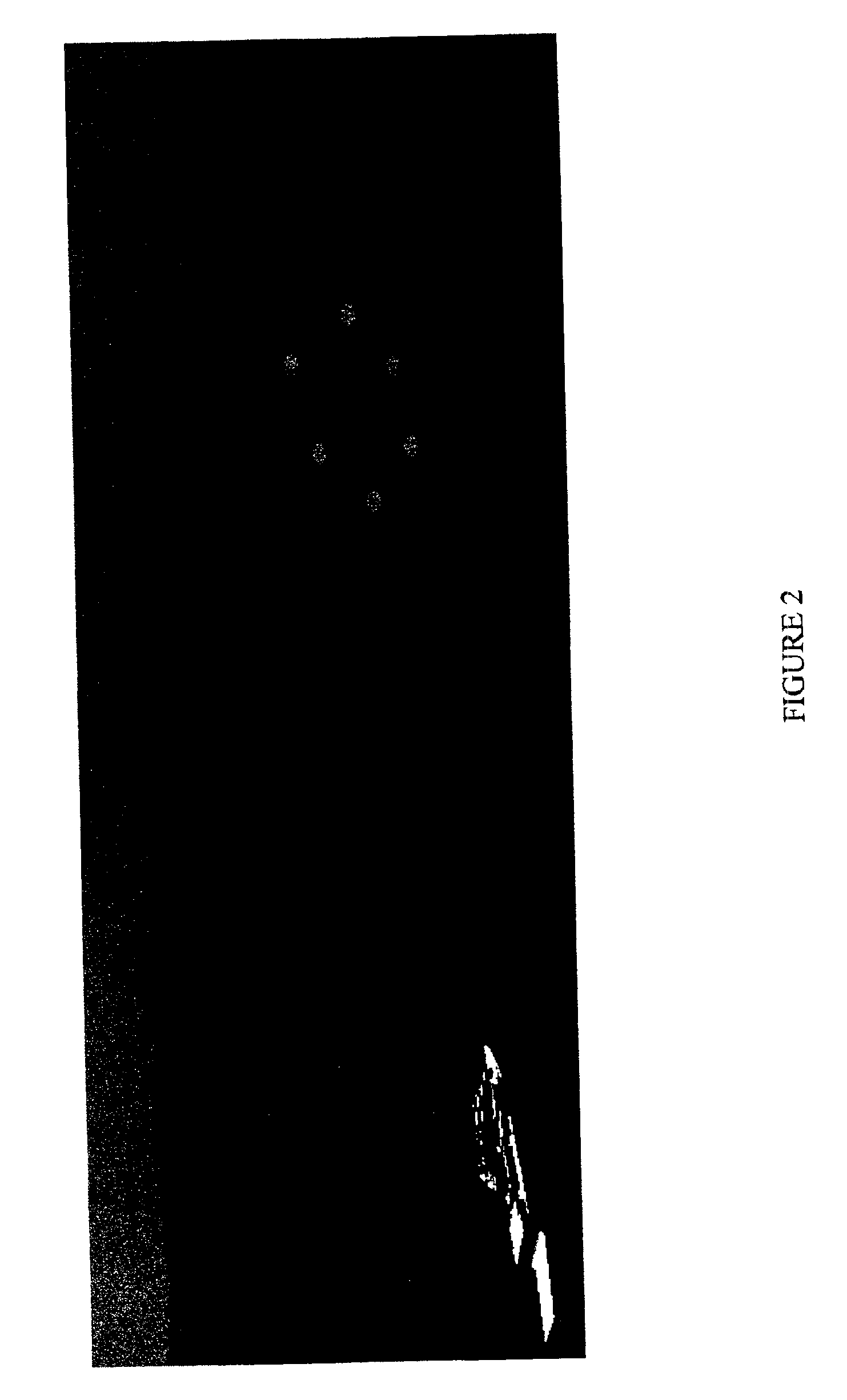Naval virtual target range system
a virtual target and range technology, applied in the field of training naval and fire support personnel, can solve the problems of increasing the lethality of the modem armament system for military applications, requiring more training for operators, and often lacking fidelity, etc., and achieves the effects of low cost, versatile weapon system training environment, and easy production
- Summary
- Abstract
- Description
- Claims
- Application Information
AI Technical Summary
Benefits of technology
Problems solved by technology
Method used
Image
Examples
Embodiment Construction
The preferred embodiment relates to an integrable naval virtual target range system in accordance with the present invention. FIG. 1 is a diagram illustrating the general configuration of the naval virtual target range system or target system 10. The target system 10 can be added onto, be built into, or be independent of a naval weapon system 90. The preferred embodiment is comprised of a control subsystem 20, a spotter subsystem 40, and a buoy subsystem 60. The target system 10 also may further comprise an aerial subsystem 70 including an unmanned aerial vehicle 72, to be used alternatively to or in combination with the buoy subsystem 60. The various subsystems of the target system 10 can be positioned at different locations and on different platforms, such as a ship, or positioned on a single platform. Preferably, the control subsystem or central processing subsystem 20 is located on board the ship having the naval weapon system 90 and participating in a naval weapon system fire e...
PUM
 Login to View More
Login to View More Abstract
Description
Claims
Application Information
 Login to View More
Login to View More - R&D
- Intellectual Property
- Life Sciences
- Materials
- Tech Scout
- Unparalleled Data Quality
- Higher Quality Content
- 60% Fewer Hallucinations
Browse by: Latest US Patents, China's latest patents, Technical Efficacy Thesaurus, Application Domain, Technology Topic, Popular Technical Reports.
© 2025 PatSnap. All rights reserved.Legal|Privacy policy|Modern Slavery Act Transparency Statement|Sitemap|About US| Contact US: help@patsnap.com



